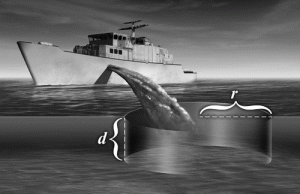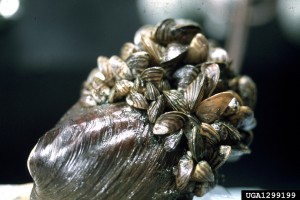Ballast Water: Invasion!
Have you ever bought something that had a little gold sticker that said “Made in China”? I see that little sticker all over the place! Although it’s not necessarily China, but you get the idea. Of course, all this “Made in (insert country here)” stuff had to have gotten here somehow. We were asked to choose a case study in sustainability science, and the sustainability case study I chose was one about ballast water in ships (like the ships with China’s, or any other country’s, merchandise). Water gets pumped into these ships in order to stabilize it enough to make a safe journey across the oceans. After it gets pumped into ships, it’s then called “ballast water.” What people had often overlooked were the microorganisms residing in this water, such as phytoplankton, zooplankton, and small fish. These organisms get shipped hundreds of miles and get released into an entirely different ecosystem. Often these organisms die out on the journey, but every once and a while there comes a time when a nonlocal organism thrives in their new habitat. These organisms can explode in numbers uncontrollably and can sap the nutrients from the original organisms that reside there. Ballast water is like an ongoing moving infection caused by people in our oceans.
This affects oceans everywhere. Right here in the San Juan Islands there is a bivalve invertebrate Nuttallia obscurata, also known as the purple varnish clam, that came to us through ballast water in the 1980s. The population here varies from quite rare to having up to 700 organisms per square meter. This is not just confined to our oceans; these organisms can spread to our lakes as well. Being from Minnesota, I know about the invasion of zebra mussels. They were believed to have been introduced to the St. Lawrence River in the late 1980’s. These little critters require $500,000,000 per year to control their catastrophic numbers in the Great Lakes alone. They smother local creatures, damage harbors, and need to be cleared regularly from waterways and water treatment plants.
There are different ways to go about this problem. Some have proposed sanitation standards for ballast discharge, which annihilates organisms living in the water. I asked my fellow colleagues in my Beam Reach class how they would go about this problem. Someone suggested that the ballast simply remain in the ship until it returned to its original body of water. Someone else suggested that the ballast should be dumped in the open ocean instead of the harbors. I was very happy with these comments, because they’re thinking right along the lines of John M. Drake, David M. Lodge, and Mark Lewis. They proposed diluting the release of non-indigenous species by limiting the volume of ballast water in a certain location. Spreading organisms reduces the chance of invading sexually reproducing species to flourish and expand. They also argued that the larger an organism is in a species, fewer individuals are required for an invasive blooming population, and simply a filter installed in the ballast release chambers could lower risks of bombardment. They used a reaction-diffusion model and allometric scaling to estimate a safe volume of ballast water that can be released for the smallest maximum for the types of organisms being pumped into the ships.
 The idea is to create a population of sexually reproducing organisms that is small enough to diffuse until extinction in the area.
The idea is to create a population of sexually reproducing organisms that is small enough to diffuse until extinction in the area.
There is still a great deal of uncertainties that come with this method. Much diffusivity for certain species (or how few organisms is required for the invading species to successfully diffuse) is unknown, and would have to be researched. This method also runs under the assumption that the organisms all sexually reproduce. Dispersal is still very possible over long distances, depending on the species. There is also the foreseen problem that even if a ship were to dump the designated “safe†amount of ballast, precaution would have to be made to make sure that multiple ships weren’t releasing ballast water in the same areas.
The whole idea is to make sure that transported invasive organisms are lost to the population through diffusion faster than they can reproduce. I believe that this offers a simple alternative, and at least a start, to the incredibly impacting problem of fresh and marine habitats. I dislike how their solution doesn’t pertain to non-sexually reproducing fauna and flora, but I appreciate how realistic this temporary solution could be.
So when you buy your “Made in (insert country here)” socks, know that it’s at the cost of marine ecosystems worldwide.




 Twitter
Twitter LinkedIn
LinkedIn Facebook
Facebook